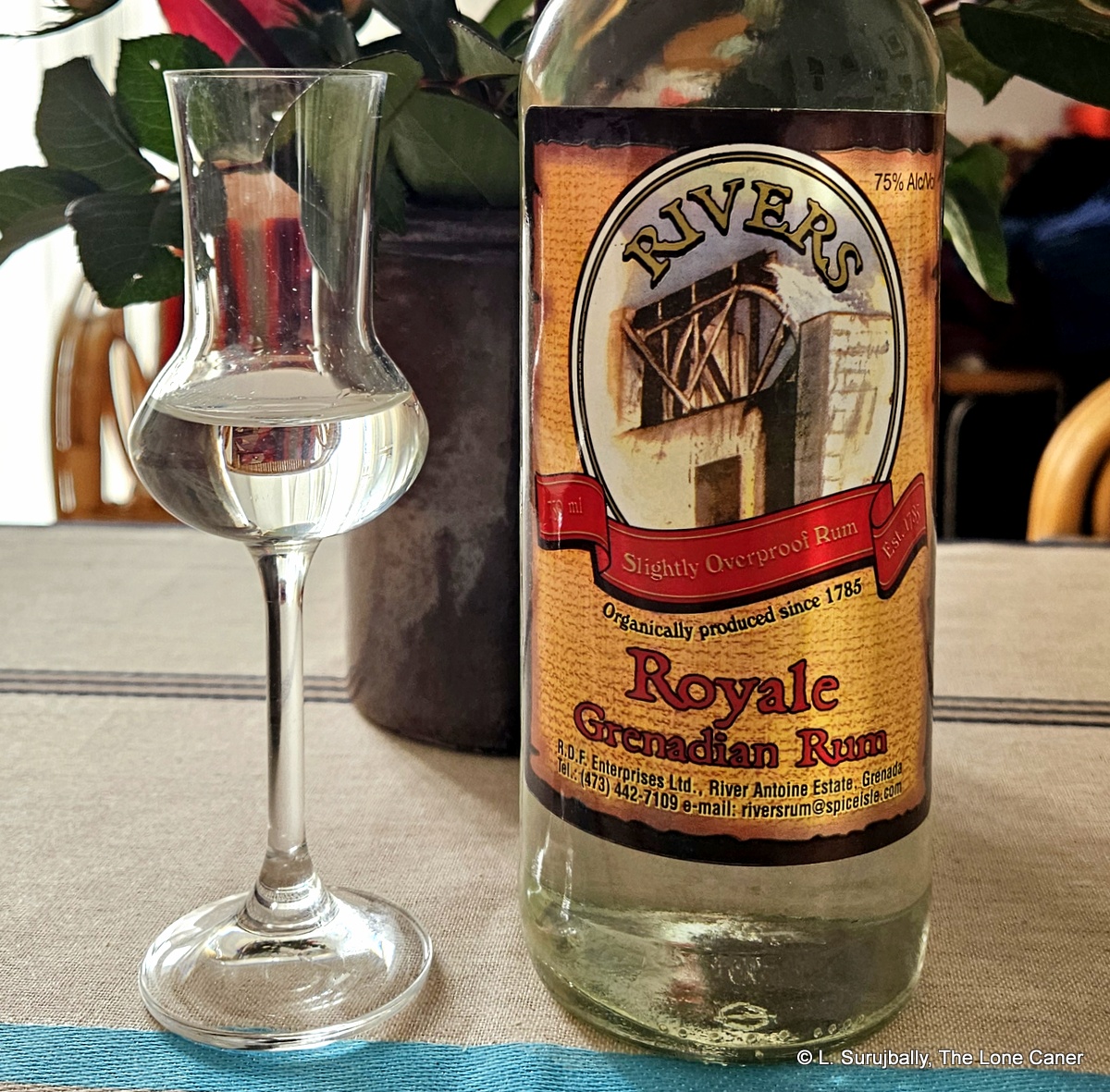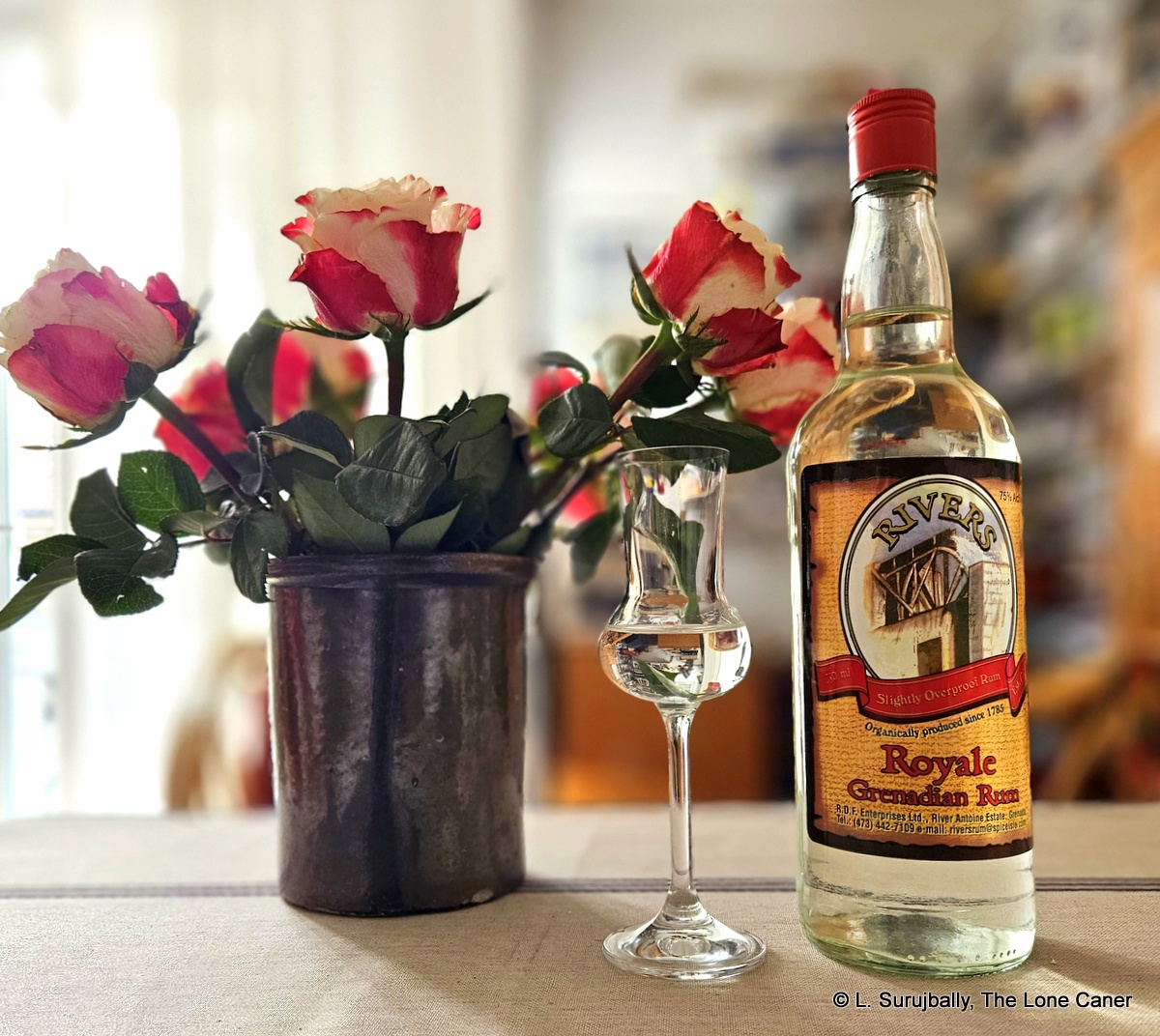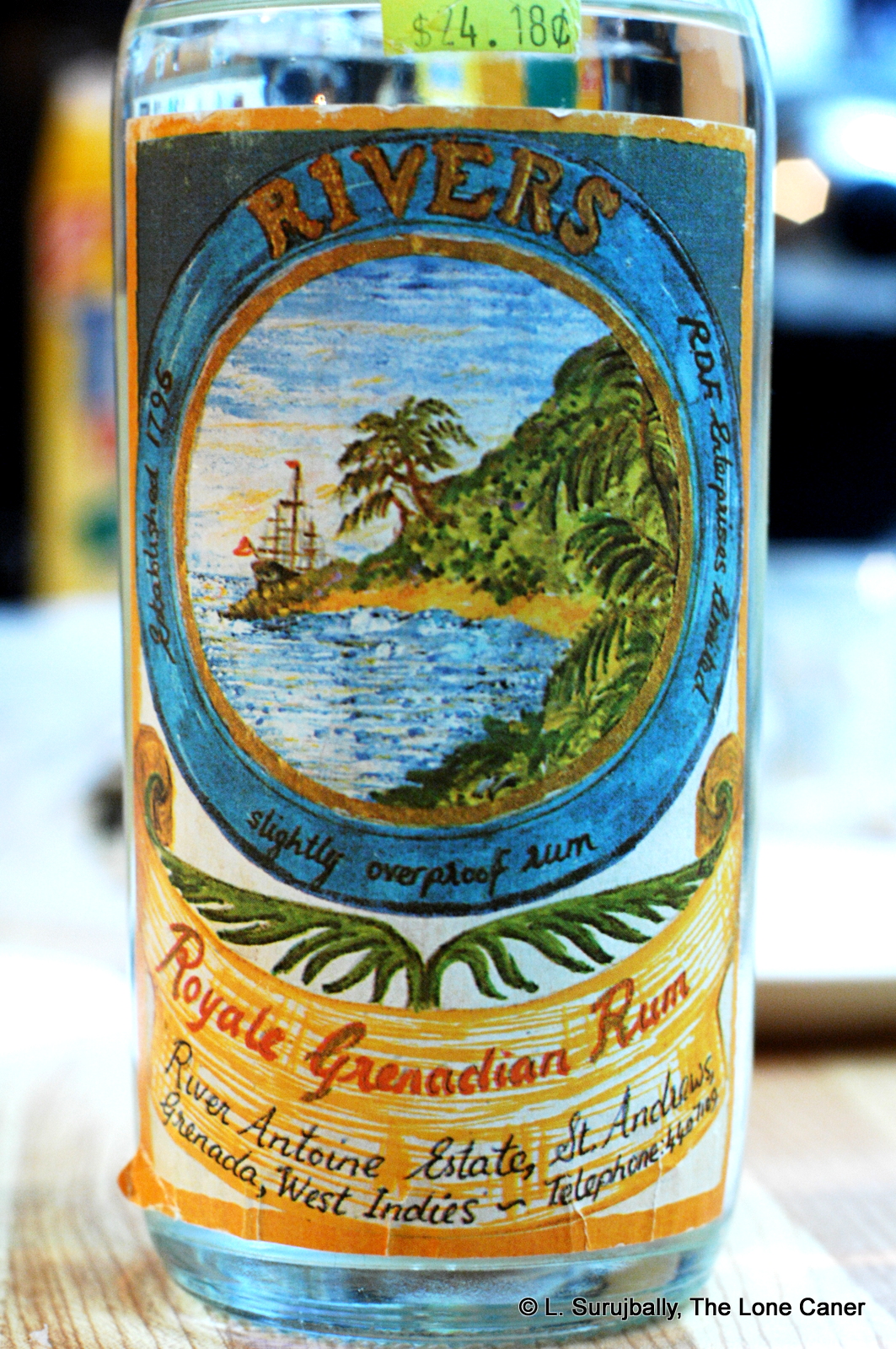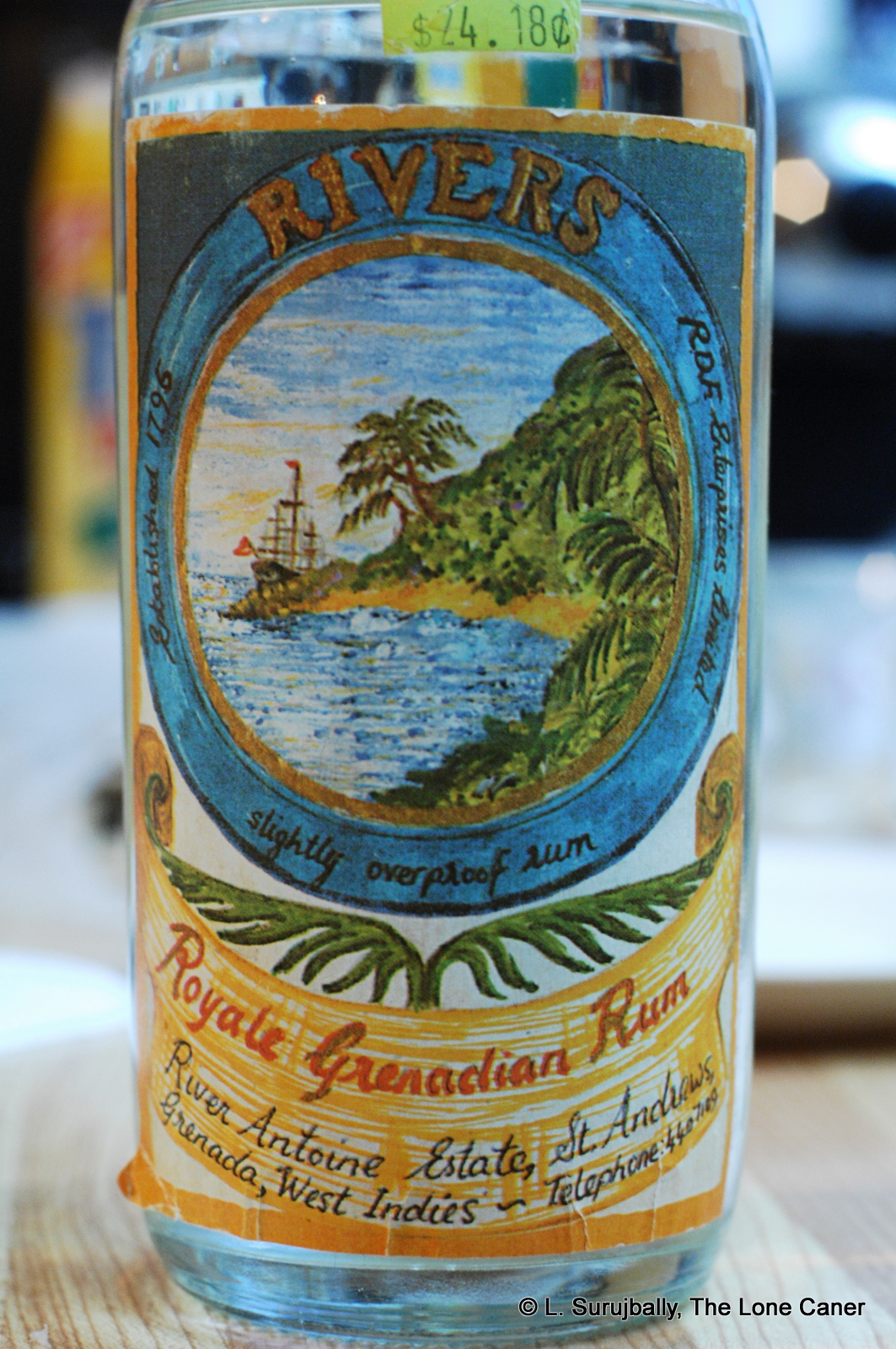We have looked at rums from Rivers Antoine before, although admittedly that was just the regularly available 69% version, which I’ve tried several times. Now, Rivers Antoine is a very old rum making estate on Grenada — they date back to 1785, were certainly in existence since two decades before that, and have only grudgingly upgraded their facilities in all that time — and is perhaps unique in that they not only grow their own sugar cane with which they press and render to “honey” make their rums, but the press is run by a water wheel (made in 1840), the fermentation is in open vats, the yeast is wild, and the rums they make are like no others. Trust me on this.
Basic production stats: cane juice syrup (some cane is from their own estate, some is bought from surrounding farmers), fermented in open topped concrete tanks which are not cleaned out between batches, so a little bit of previous batches carries forward into the next one. Wild (naturally airborne) yeast, eight days or so fermentation, and then it’s run through one or both of the two double retort pot stills (one Vendome, one John Dore), fed by wood-fueled fires underneath each, and the resultant distillate froths and smokes off the still at around 75-80%. As I’ve said, this is dialled down to 69% for the “standard” version that can be taken on flights, but this one is different, being bottled at 75%, or close to still strength.
What results from all this is a rum of real character: anyone who smells this isn’t going to forget it in a hurry. It’s a pungent, potent, pot still putain, hard bitten and hard boiled as a thirties noir gumshoe, with scents to match. It’s rubbery, ester driven, sour and with as much glue as a glossy new fashion magazine hot off the presses. And as if that isn’t enough, you’ll smell plasticine, varnish, turpentine, and then the sour-sweet scent of kimchi, rotting oranges, ripe mangoes, and if you think this is a Jamaican funk bomb detonating in y9our face, well, it’s pretty close. Rivers never bothers to make a fuss over that, simply letting the product speak for itself…and it sure doesn’t speak in quiet modulated tones, but bellows its puissance from the rooftop.
I know this may sound like over the top insanity to smell, but rest assured that the taste is much more approachable, without ever letting go of its slightly off-kilter vibe.It presents some light fr uits and sugar, again the sourness of gooseberries and overripe oranges — the part that distinguishes it from the Jamaicans is a certain agricole-style herbaceousness, a sort of green lemongrass and citrus note that combines well with balsamic vinegar and olives and the faintest suggestion of salt. And the finish…wow. Epic, long lasting, green and fragrant, very fruity with pineapples and spearmint and (yes, still here), grass, miso soup, rubber and plastic notes that fortunately are well tamed by this time. Basically, as my burb states — Rivers starts like a bat out of hell and then slows down to one wing short of batsh*t crazy by the end.
uits and sugar, again the sourness of gooseberries and overripe oranges — the part that distinguishes it from the Jamaicans is a certain agricole-style herbaceousness, a sort of green lemongrass and citrus note that combines well with balsamic vinegar and olives and the faintest suggestion of salt. And the finish…wow. Epic, long lasting, green and fragrant, very fruity with pineapples and spearmint and (yes, still here), grass, miso soup, rubber and plastic notes that fortunately are well tamed by this time. Basically, as my burb states — Rivers starts like a bat out of hell and then slows down to one wing short of batsh*t crazy by the end.
At 75% ABV we should not be surprised at the hot and spicy nature of it, yet it carries the weight of that strength without too much of an assault on the senses – I actually think once you get used to it, it’s something of a (slightly masochistic, admittedly) fun and interesting tasting experience. There’s such a joyous irreverence of competing flavours going on inside, it’s so strong and moves so fast, that one can only wonder how so much was stuffed into a standard barroom bottle without it shattering to shards on the spot.
Sure, most people will mix it – with coconut water, a soda, ice or whatever’s on hand (I think it would shine in a daiquiri), yet I submit that perhaps it’s worth trying by itself, just the one time. Because even though, afterwards, you might not remember everything that happens, you’ll know you had a good time while it lasted.
(#1114)(85/100) ⭐⭐⭐½
Other notes



